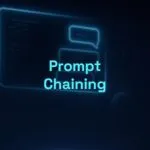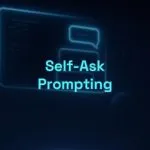SPARK Framework: Situation, Problem, Aspiration, Results, Kismet (Luck or Destiny)

Every good story has a turning point — and every good prompt can come to life with narrative, tension, and transformation. The SPARK framework does exactly that, bringing creativity and emotion to your interactions with AI. With its “Kismet” element, it mimics human serendipity, turning ideas into impactful stories or unexpected strategies.
If you’re looking to create compelling stories, memorable campaigns, or innovative solutions, SPARK is your go-to tool. Let’s explore how it lights the creative spark.
What Is the SPARK Framework?
The SPARK framework is a five-part structure that blends practical analysis with a spark of imagination. It helps the AI understand the scenario, the obstacle, and your aspirations, culminating in tangible outcomes — and a surprise element. Here’s how each component works and when to use it.
Framework Components
- Situation: Describes the current context, providing a starting point for the AI.
- Problem: Identifies the main challenge or obstacle to be faced.
- Aspiration: Defines what you hope to achieve — your vision or ideal goal.
- Results: Specifies the practical deliverables you expect, such as “a plan” or “a list”.
- Kismet (Luck or Destiny): Adds a creative or unpredictable twist, such as an unexpected insight or a surprising turn that amplifies the solution.
These elements build a prompt that balances logic with innovation — ideal for out-of-the-box responses.
The Role of Kismet in Creativity
“Kismet” refers to a moment of fate or fortune. In the SPARK structure, it’s used to inject surprise or serendipity into the narrative, mimicking those real-life moments of inspiration or unexpected success.
When to Use It?
SPARK is ideal when you want more than a standard solution. Use it if:
- You need creative ideas that blend logic and imagination.
- You want to explore scenarios with a touch of unpredictability.
- You’re crafting strategies, unique projects, or inspiring stories.
- You aim to create brand storytelling, case studies, or personal narratives.
- You’re working on emotionally resonant content.
- You want to build narratives of transformation or overcoming adversity.
For example: “Tell a story about [Situation], where there was [Problem], until the desire for [Aspiration] emerged. Show the [Results] achieved and end with a reflection on whether it was the result of [Kismet].”
Practical Examples of SPARK in Action
Here are three examples showing how SPARK delivers creative and effective results in different contexts.
Example 1: Sustainable Design Narrative with Open Kismet
Context: A design team is developing new sustainable urban furniture.
Tell a story about a city facing visual pollution from outdated urban furniture (Situation). A local design team struggles to create solutions that are both eco-friendly and visually appealing (Problem). They aspire to transform the urban environment with innovative, sustainable designs (Aspiration). After several attempts, they implement a line of benches made from recycled materials that harmonize with the surroundings (Results). Based on this context, continue the story with a surprising or unexpected twist that significantly changes the course of events (Kismet).Why it works: This prompt guides the AI through a complete and cohesive narrative, from a real-world urban issue to a visually impactful and sustainable solution. The open-ended “Kismet” invites originality, allowing the AI to creatively conclude the story with a meaningful and memorable twist.
Example 2: Strategic Prompt for Product Launch
Context: You’re entering a competitive market.
In the situation of a startup launching an innovative product (Situation), I face strong competition from established brands (Problem). I want to stand out in the market (Aspiration), delivering a marketing strategy with 3 actions (Results), with a stroke of luck that turns the tide in my favor (Kismet).Why it works: The “Situation” sets the scene, the “Problem” highlights the challenge, and the “Aspiration” defines the goal. The “Results” demand something tangible, while “Kismet” allows for a bold, unexpected idea.
Example 3: Emotional Marketing with a Creative Touch
Context: An online stationery store wants to stand out on Teacher’s Day.
In the situation of an online store specializing in handcrafted stationery (Situation), I face the problem of low brand distinction during seasonal events like Teacher’s Day (Problem). I want to delight my audience with something unique and heartfelt (Aspiration), delivering three emotionally engaging and shareable campaign ideas (Results), with an unexpected element that sparks joy and spontaneity (Kismet).Why it works: This prompt uses SPARK to generate emotionally resonant marketing ideas. The open-ended Kismet encourages the AI to propose a surprise — such as a spontaneous customer initiative, an unusual partnership, or a symbolic gesture that makes the campaign memorable.
Tips to Get the Most Out of SPARK
SPARK is highly adaptable and can be customized to suit your style or goals. Here are a few tips to personalize and maximize its potential.
Customize for Your Objective
- Situation: Clarify the context. “A small team” is different from “a global event”.
- Problem: Detail the main obstacle. “Lack of time” is more specific than just “challenges”.
- Aspiration: Dream big but stay focused. “Growth” is vague; “doubling your audience” is concrete.
- Results: Set the detail level. “Ideas” is broad; “3 concrete steps” is clear.
- Kismet: Ask for or describe a surprise, such as “an overlooked factor” or “an impossible idea that works”, to spark unique insights.
Quick Example:
“In the situation of a writer with creative block (Situation), I face a lack of inspiration (Problem). I want to create a unique story (Aspiration), delivering a 3-part outline (Results), with an impossible idea that somehow works (Kismet).”
Start Using SPARK Today
SPARK is your tool to ignite brilliant and actionable ideas with AI. It combines context, challenge, and creativity, ensuring that your interactions with LLMs are both strategic and inspiring. Whether for business, storytelling, or innovation, this structure leads to responses that surprise and deliver.
🎯 Quick Summary:
SPARK defines the setting (Situation), the challenge (Problem), the dream (Aspiration), the deliverable (Results), and the unexpected twist (Kismet).
🔗 Want to explore more frameworks like this?
Check out the Practical Guide to Prompt Techniques, Frameworks, and Formulas for LLMs, with dozens of detailed and applicable structures for different contexts and goals, plus techniques and prompt engineering tips.
📘 Bonus tip:
Download the free eBook “Prompt Engineering Unveiled”, featuring easy explanations, practical examples, and strategies ranging from basic to advanced to master communication with AI.



